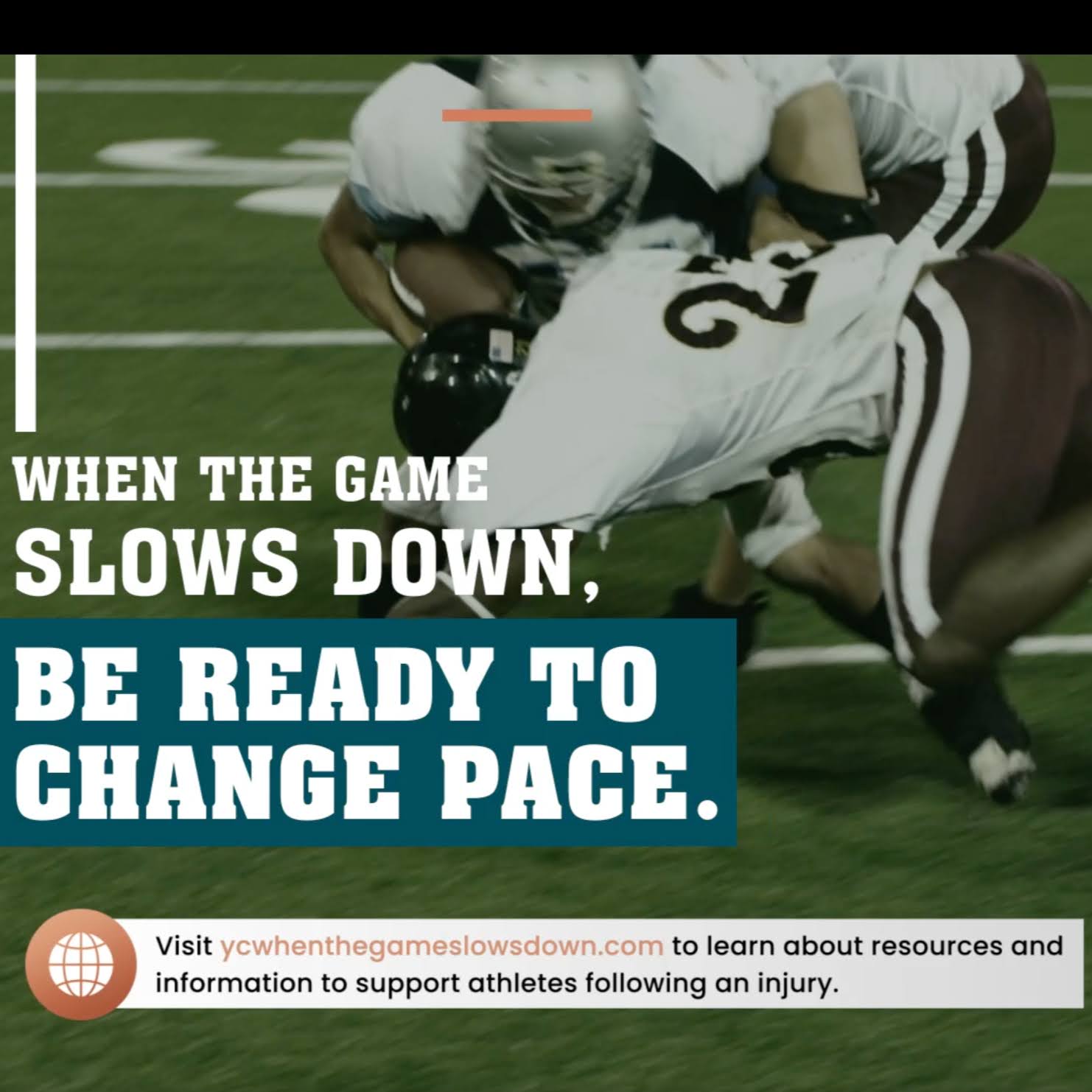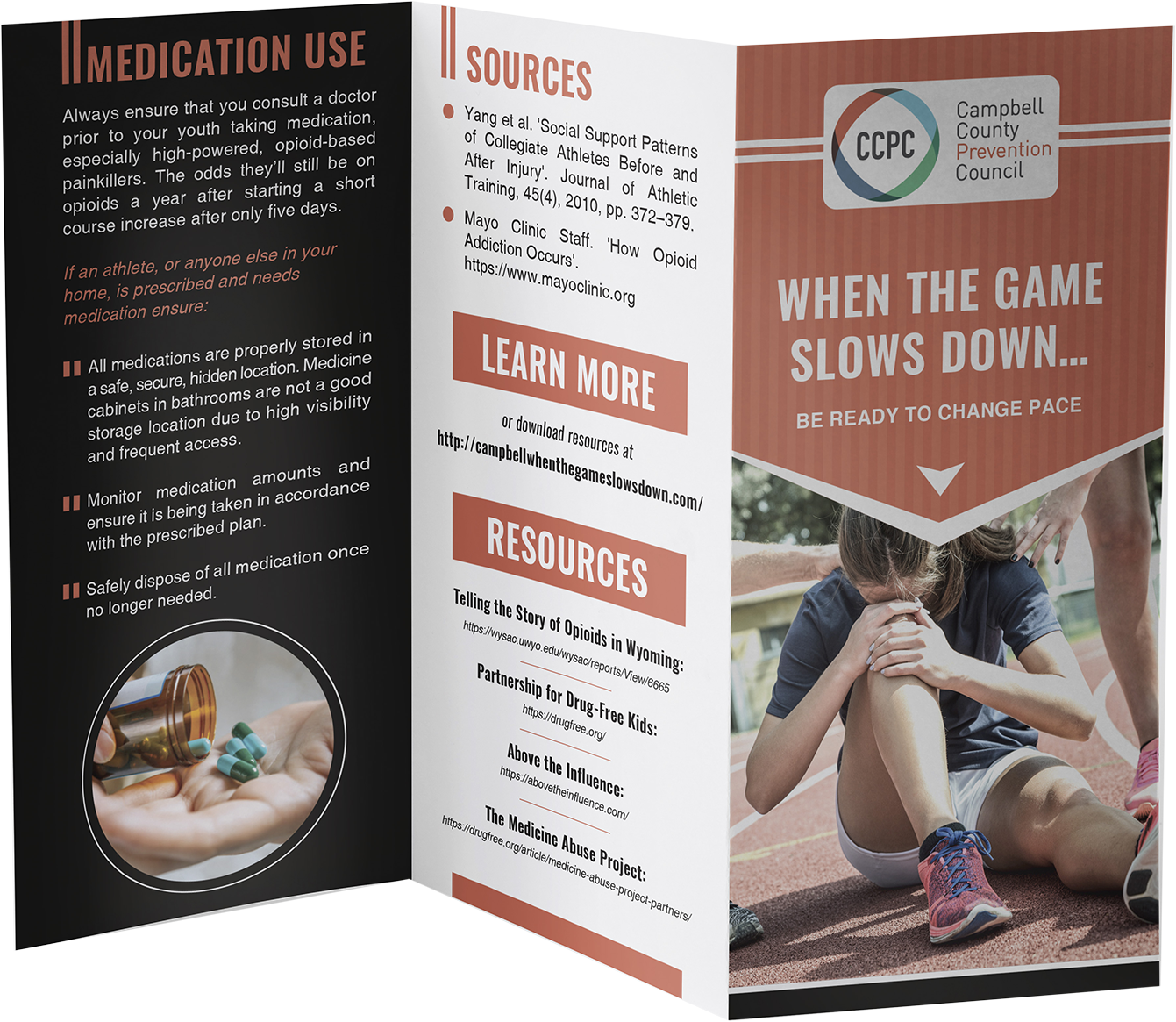Problem
Sports injuries are an expected part of an athlete’s life, but the consequences of pain management decisions are often overlooked. While much of the opioid prevention messaging focuses on high-risk populations, student-athletes and their families were often left out of the conversation—even though sports-related injuries can be a major gateway to medication misuse.
Traditionally, coaches, parents, and athletic programs have not been considered a high-risk audience, yet they play a pivotal role in shaping young athletes’ decisions. Many were unaware of the risks associated with prescription pain medication following an injury, but when given the tools to engage, they became some of the strongest advocates for prevention efforts.


Purpose
The When the Game Slows Down initiative was designed to bridge this gap, meeting coaches, parents, and athletes where they are—on the field, in locker rooms, and in conversations about injury recovery. The program focused on:
- Providing coaches, trainers, and parents with real tools to proactively discuss injury recovery and pain management.
- Creating a shift in mindset—from avoiding discussions about pain medications to openly addressing their risks.
- Engaging an audience that didn’t initially see themselves as part of the problem but quickly became an integral part of the solution.
- Building a prevention model where gratitude and support fueled long-term buy-in, rather than resistance to the message.
Payoff
By using highly targeted digital outreach and first-hand stories from athletes and coaches, the initiative resonated deeply with those previously outside traditional prevention efforts.
Year 1 Results (2020)
- 65,142 Reach – parents, athletes, and community members exposed to educational content.
- 218,758 Impressions – awareness generated through strategic digital campaigns.
- 21,294 Engagements – active interactions with prevention messaging.
- 42% of engaged users were ages 13-17, highlighting direct youth impact.
Year 2 Results (2021)
- 74,349 Reach (+14%) – expanded access to critical prevention education.
- 403,655 Impressions (+84%) – double the reach through refined targeting.
- 42,707 Engagements (+100%) – evidence of stronger audience investment.
- 1.63% Click-Through Rate – higher than industry benchmarks for health education campaigns.
A Culture of Receptiveness and Gratitude
What made When the Game Slows Down stand out was the unexpected appreciation and buy-in from parents, coaches, and athletic trainers who had never considered themselves part of the prevention conversation.
- Coaches realized the importance of their role—not just in training athletes but in helping them make informed choices about pain management.
- Parents became active partners in prevention, grateful for a non-judgmental, practical approach that gave them real tools to talk about medication safety.
- Athletes felt seen, not blamed—understanding that pain management is part of their sports journey and that smart choices about medication could protect their future.
By meeting this audience where they were already engaged—sports teams, injury recovery conversations, and digital platforms—the initiative turned a non-traditional audience into a passionate ally for prevention.
Why This Matters for You
For mental health professionals, substance use prevention teams, law enforcement, and public health officials, this case study proves that prevention messaging works best when it reaches the right audience in the right way.
- Are your prevention efforts reaching beyond traditionally at-risk populations?
- Are you leveraging community leaders—coaches, teachers, and parents—as prevention partners?
- Are you designing outreach in a way that builds support rather than resistance?
The When the Game Slows Down initiative demonstrates that prevention can be engaging, inclusive, and effective—even in communities that may not initially see themselves as part of the solution.
